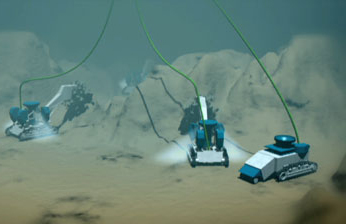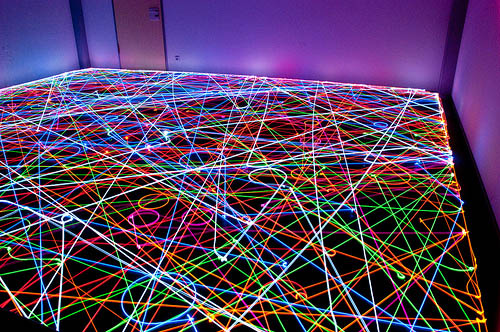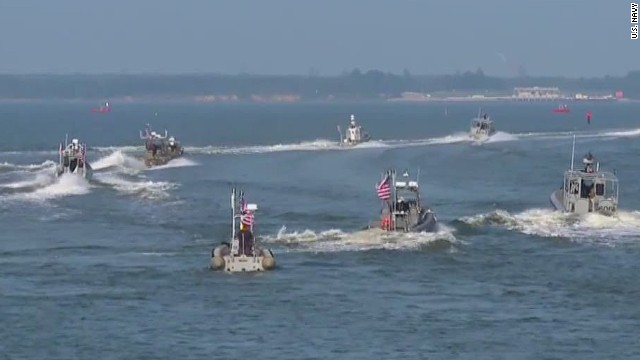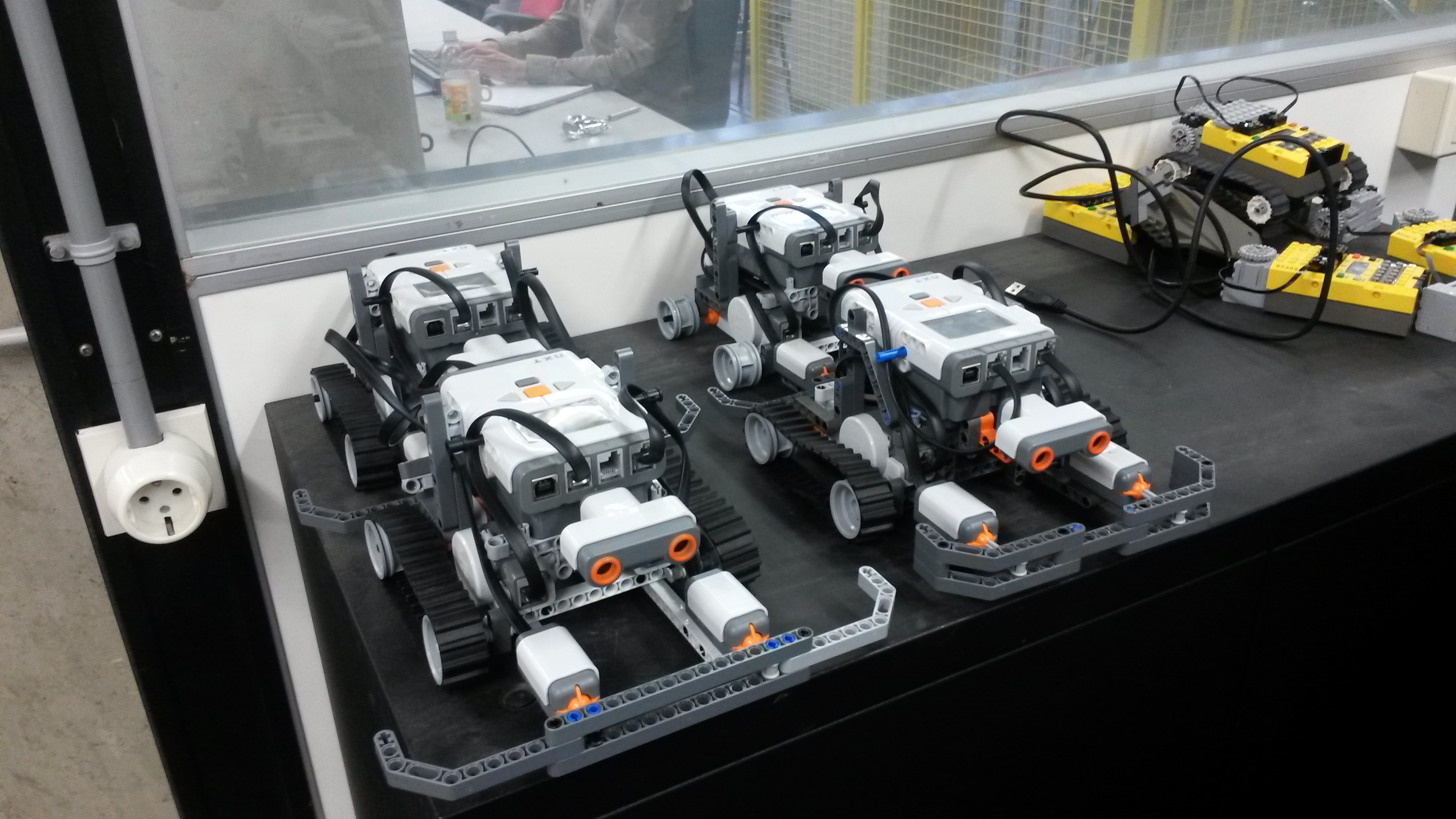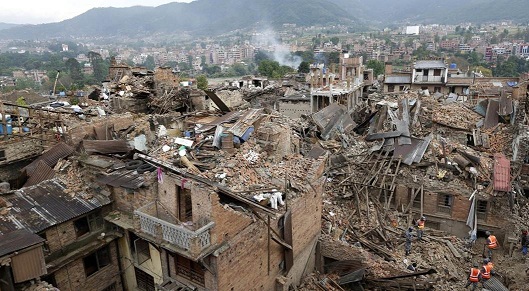PRE2015 2 Groep1
Universal Swarm Robotics Software Project
Swarm robotics is a new approach to the coordination of multirobot systems which consist of large numbers of mostly simple physical robots. It is supposed that a desired collective behavior emerges from the interactions between the robots and interactions of robots with the environment. The key-factor in swarm robotics is the simplicity of the individual and the possible applications of the applications of the bigger group. Since the individual robots are so simple, researchers are able to use actual hardware instead of simulations. Therefor the researchers come across and resolve a lot more issues than they would be able to using simulations, since research with actual hardware (almost always) brings up new issues which are not covered in the simulations.
The possible applications for this field of research is immense. Since the robots aim to be as simple as possible, it is possible to greatly reduce the size of the individuals. In a world were technology is miniaturizing this is a great plus, for instance think about the field of nano-robotics and micro-robotics. Some known applications in the field of swarm robotics to date are:
- Tasks with cheap design demands, like mining tasks or agricultural foraging tasks. Here you can see a small swarm of robots Deep-Sea mining.
- Swarm robotics are also known to be used by artists to realize new forms of interactive art. Here you can see the result of a light painting done using swarms of robot vacuum cleaners.
- Another application of the swarm robotic technology is within the military, in order to form an autonomous army. Swarms of micro aerial vehicles have been already tested in tasks of autonomoes surveillance, plume tracking and reconnaissance in compact phalanx. The U.S. Naval forces are also testing with a swarm of autonomous boats that can steer and take offensive action by itself, see picture below.
- But the most promising use of the swarm robotics is within the field of disaster rescue robots, since the robots are a lot more adaptable than the current rescue methods (see scenario) due to their small size. Therefor the scope of this project will be within the field of disaster rescue robots, see picture below for our own rescue swarm.
Scenario
For the scenario of this case, a disaster has struck and demolished many buildings and structures. Whether it was an earthquake, an explosion or an alien attack, there will be debris from fallen structures which make possibly trapped people inaccessible. Till today still many people don't get saved in time and die due to the severity of there injuries. Although the rescue techniques have improved over the years, a better solution has to be made to tackle this problem. Some of the current techniques used in rescue missions are:
- rescue dogs, which able to smell people trapped under layers of debris
- helicopters, which are used to get a global eagle point of view were possible survivors can be spotted
- volunteers, which are a big part of the rescue missions in disaster areas
- Emergency Response Vehicles (ERVs), which are deployed in the disaster areas. Here they circulate throughout affected communities in order to hand out food, relief supplies, information and comfort to people in need
Since the help could still be improved for the struck people, an attempt is made here to introduce swarm behavior to this problem. The general idea being that a cooperation swarm of robots gives a greater result then a multi functional unit which has the same capabilities as the swarm as a whole. The key in succeeding is to create a synergy between the swarm units, which is translated into the robot control software. Since the swarm will be in direct contact with users (for example people struck by the accident) and society, USE principles will be one of the main guidelines in this design process.
Goal
The goal of this project is to create a framework for rescue swarm robots with the USE principles as the basis of decision making. This project will focus on designing the hardware and developing the software. Our first idea was to use freeduino based robots as hardware, however after some thought and discussion Lego Mindstorms Robots will be used. The software consists of the robot control software and a simulation. Using swarm robotics allows us to coordinate a large group of rescue robots. To asses the result a final scenario will be created.
USE principles
Summary of activities arranged by week
Week 1
- Some brainstorming was done to come up with an idea for this project. Swarm behavior for robots has gotten the attention and a goal is set, this goal of the project is explained above.
- Also a start of the litarature study is made, in order to check what technology is already available and how this is adaptable for our final scenario.
Week 2
- In the second week a presentation was given regarding our current goal and findings of the past week.
- Also the USE principles regarding our project were examinated.
- The litarature study was also expended during this week in the progress.
Week 3
- Because of the feedback regarding our last presentation more litarature study has been done.
- Furthermore, from this literature study, an early idea for a solution is conceived.
- A list of needed materials is composed (see freeduino based robots).
- The final scenario is further specified.
- The actual real-world scenario is described.
- Also the link between the USE principles and the configuration of the Freeduino based robots has been made.
Week 4
- A planning with specific tasks per student is made, see planning group 1
- A log will be kept so progress can be monitored.
- Lego Mindstorms Robots will be used instead of the freeduino based robots.
- A first (toplevel) simulation is written: toplevel simulation
Week 5
- This week the new Robots with the NXT Bricks are obtained and built.
- Software for programming is downloaded, see Software NXT Robots.
- A start with the search algorithm for the pathing of the robots has been made.
- Programming of the communication and behaviour of the NXT Robots has been started.
Week 6
- Programming has been done, in cooperation with some useful forum links for programming
Week 7
- Second week of the Christmas Holiday.
Week 8
- The localisation of the NXT Robots is programmed.
